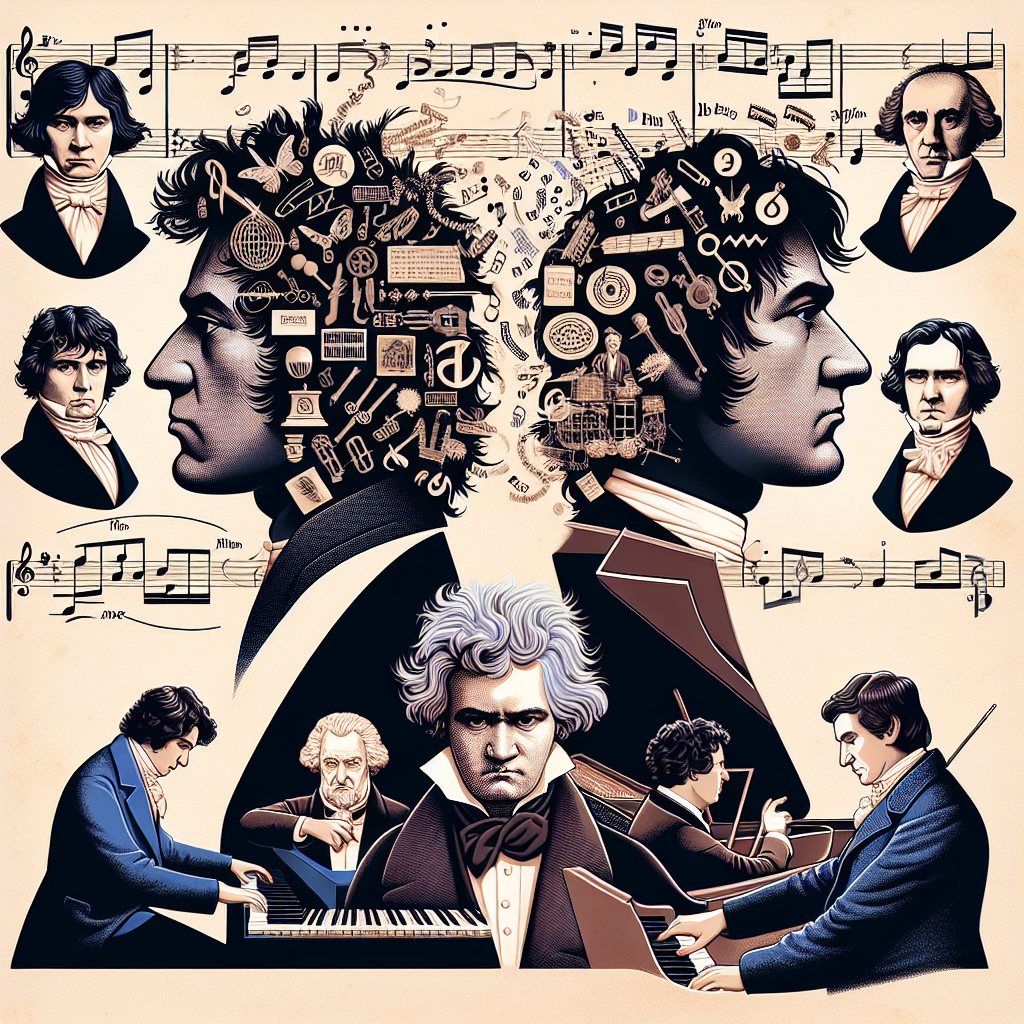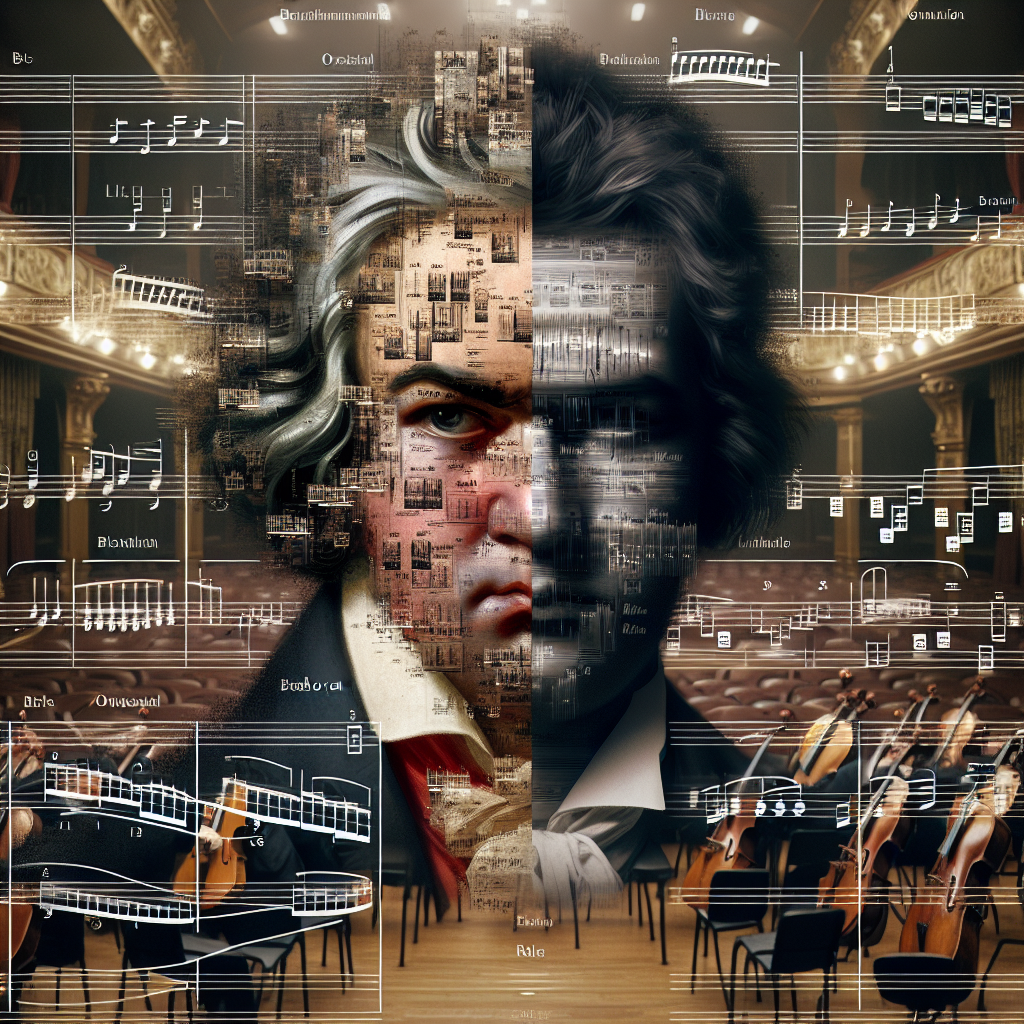
The Beethovenian Elements in Carl Maria von Weber’s Music
Ludwig van Beethoven stands tall among the towering figures of Western classical music, his works marking a seismic shift from the Classical to the Romantic era. His innovative compositions have left an indelible mark on the music world, influencing countless composers who followed in his footsteps. One such composer profoundly impacted by Beethoven’s genius was Carl Maria von Weber. Known primarily for his operas, Weber also composed symphonies, concertos, and chamber music that bore the unmistakable mark of Beethoven’s transformational sound.
When exploring Beethoven’s influence on Weber, we discover not just a series of imitated techniques, but rather a deeply internalized ethos that Weber adapted to his distinctive style. This essay delves into the impactful relationship between Beethoven’s groundbreaking compositions and Weber’s uniquely expressive music. By examining key elements of Weber’s works, such as thematic innovation, orchestration prowess, and dramatic expression, we can trace the Beethovenian elements that shine through.
Beethoven’s hallmarks included the profound depth of emotional expression, innovative structural forms, and masterful orchestration. These elements permeate Weber’s compositions, demonstrating how Beethoven’s revolutionary approaches echoed through the Romantic period.
Beethoven’s Emotional Expression and Weber’s Response
One of Beethoven’s most significant contributions to the music world was his heightened emotional expression. He pioneered the portrayal of intense personal and existential struggles in his music—an approach readily absorbed by Romantic composers. Beethoven’s ability to convey profound sorrow, joy, and everything in between resonated deeply with Weber.
This heightened emotional palette is evident in Weber’s operas, such as “Der Freischütz.” The opera’s overture encapsulates a mood of foreboding that parallels Beethoven’s evocative storytelling in pieces like the “Eroica” Symphony. The shifts in emotional intensity and the usage of silence for dramatic effect can be traced back to Beethovenian techniques.
Weber also drew from Beethoven’s ability to use leitmotifs—musical phrases associated with particular characters or themes, helping to develop a narrative through music. While Beethoven’s usage of leitmotifs was more subtle, Weber took this concept and ran with it, making it a cornerstone of his operatic writing. This emulation shows a direct line from Beethoven’s innovative narrative abilities to Weber’s own works.
Structural Innovation: From Symphonies to Operas
Beethoven was a pioneer in expanding the structural boundaries of classical music. His symphonies broke away from the established norms, incorporating new forms and extending traditional structures. Weber admired this aspect of Beethoven’s work and sought to incorporate similar innovations in his own compositions.
The influence is particularly evident in Weber’s concert overtures. Pieces like the “Oberon Overture” and “Euryanthe Overture” showcase a departure from traditional sonata-allegro form, mirroring Beethoven’s development of broader, more complex structures. These compositions reflect a deep understanding of Beethoven’s willingness to push structural boundaries, creating a sense of cohesion and thematic unity across movements.
Moreover, Beethoven’s late string quartets, known for their unconventional structures and profound depth, served as inspiration for Weber’s chamber music. Weber’s Piano Quartet in B-flat major, Op. 8 exhibits a similar structural ingenuity, where the lines between different movements are blurred, evoking a continuous musical narrative.

Orchestral Techniques: Embracing Beethoven’s Mastery
Beethoven revolutionized orchestration, achieving unprecedented balances of sound and texture. His symphonic works often included innovative uses of woodwinds and brass, previously relegated to secondary roles, invigorating them with a newfound prominence that challenged and expanded the orchestral palette.
In Weber’s orchestral writing, we see a clear inheritance of Beethoven’s techniques. Weber’s use of the horn, for example, stands out as a direct nod to Beethoven’s innovative horn parts in his symphonies. The Concertino for Horn and Orchestra in E minor, Op. 45, demonstrates Weber’s brilliant use of the horn, pushing its capabilities and expressiveness akin to Beethoven’s approach.
Furthermore, Weber’s orchestration in his operas showcases the meticulous balance Beethoven achieved between different orchestral sections. In “Der Freischütz,” Weber crafts a rich tapestry of sound, akin to Beethoven’s symphonic texture, balancing the dramatic needs of the stage with the acoustic demands of the concert hall. This synthesis of orchestral color and dramatic tension is a hallmark that Weber absorbed from Beethoven’s symphonic principles.
Dramatic Expression: The Operatic Dimension
Beethoven’s dramatic expression reached beyond pure instrumental music and into the operatic realm, with his only opera “Fidelio” demonstrating the power of combining music with narrative drama. This operatic approach left a profound mark on Weber, who became a pivotal figure in the romantic operatic tradition.
Weber’s operas, especially “Der Freischütz,” exhibit a dramatic tension and narrative complexity that are reminiscent of Beethoven’s dramatic prowess. The use of recurring motifs to signify characters and themes in his operas directly extends Beethoven’s influence. Weber’s infusion of supernatural elements and the struggle between good and evil in “Der Freischütz” exemplifies the dramatic and emotional depths Beethoven probed in his own works.
Moreover, Weber’s approach to character development through music shows a clear lineage to Beethoven’s principles. Weber’s character-driven arias and ensembles in his operas resonate with the way Beethoven used melodic and harmonic language to reflect psychological complexity. This connection underscores how Beethoven’s dramatic musical expression found fertile ground in Weber’s operatic creations.
Legacy and Lasting Impact: Beyond Beethoven
The elements of Beethoven’s music that influenced Weber didn’t end with his compositions; they sparked a chain reaction influencing subsequent generations. The Beethovenian elements that Weber internalized and adapted became core components of the broader Romantic movement, exemplified in later works by Wagner, Berlioz, and Liszt.
Weber’s synthesis of Beethoven’s emotional intensity, structural innovation, orchestral techniques, and dramatic expression contributed to a richer, more dynamic musical language. This language, in turn, formed the bedrock of the Romantic composers’ expressive explorations. Wagner’s use of leitmotifs and the epic scale of his operas can trace their lineage back through Weber to Beethoven’s pioneering works.
Moreover, the influence stretches into the symphonic realm, where the increasing complexity and emotional depth of Romantic symphonies owe much to the foundations laid by Beethoven and extended by composers like Weber. From Mahler to Brahms, the shadow of Beethoven’s innovations, channeled through Weber’s adaptations, continued to shape the symphonic landscape.
Conclusion: Beethoven, Weber, and the Romantic Synthesis
Examining Carl Maria von Weber’s music through the lens of Beethoven’s influence reveals a rich tapestry of musical dialogue between two towering figures of classical music. Beethoven’s revolutionary approaches to emotional expression, structural forms, orchestration, and dramatic narrative left an indelible mark on Weber’s compositional voice.
Weber absorbed and adapted Beethoven’s innovations, incorporating them into his unique style and laying the groundwork for future Romantic composers. As we hear the echoes of Beethoven in Weber’s music, we witness the dynamic evolution of musical thought from the Classical to the Romantic period.
Ultimately, Beethoven’s legacy finds one of its most vibrant expressions in Weber’s compositions, illustrating the transformative power of musical influence. Through this influence, the emotional complexity, structural innovations, and dramatic prowess that define Beethoven’s music were not only preserved but also expanded and reimagined, ensuring that Beethoven’s spirit continued to inspire and shape the musical journeys that followed.